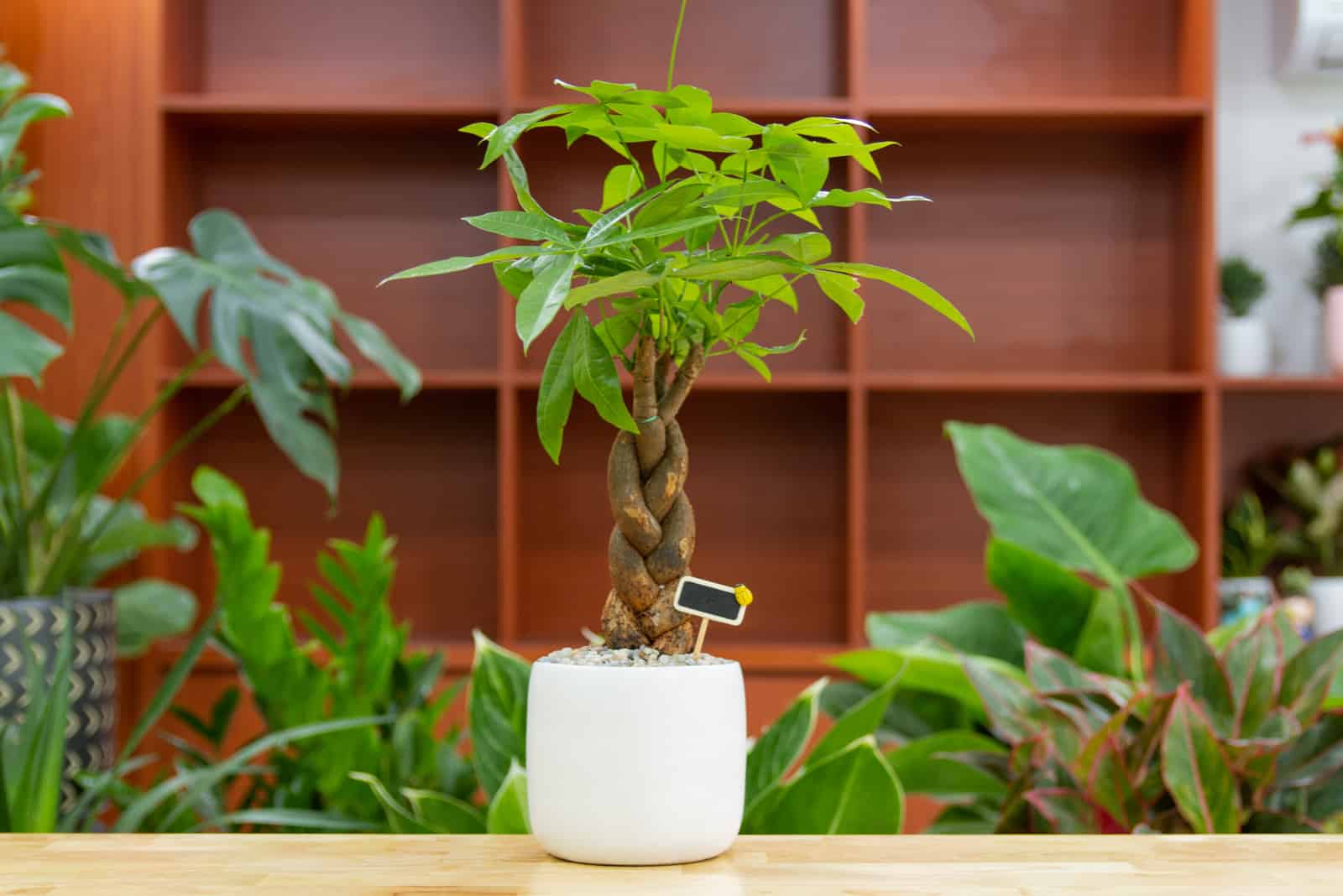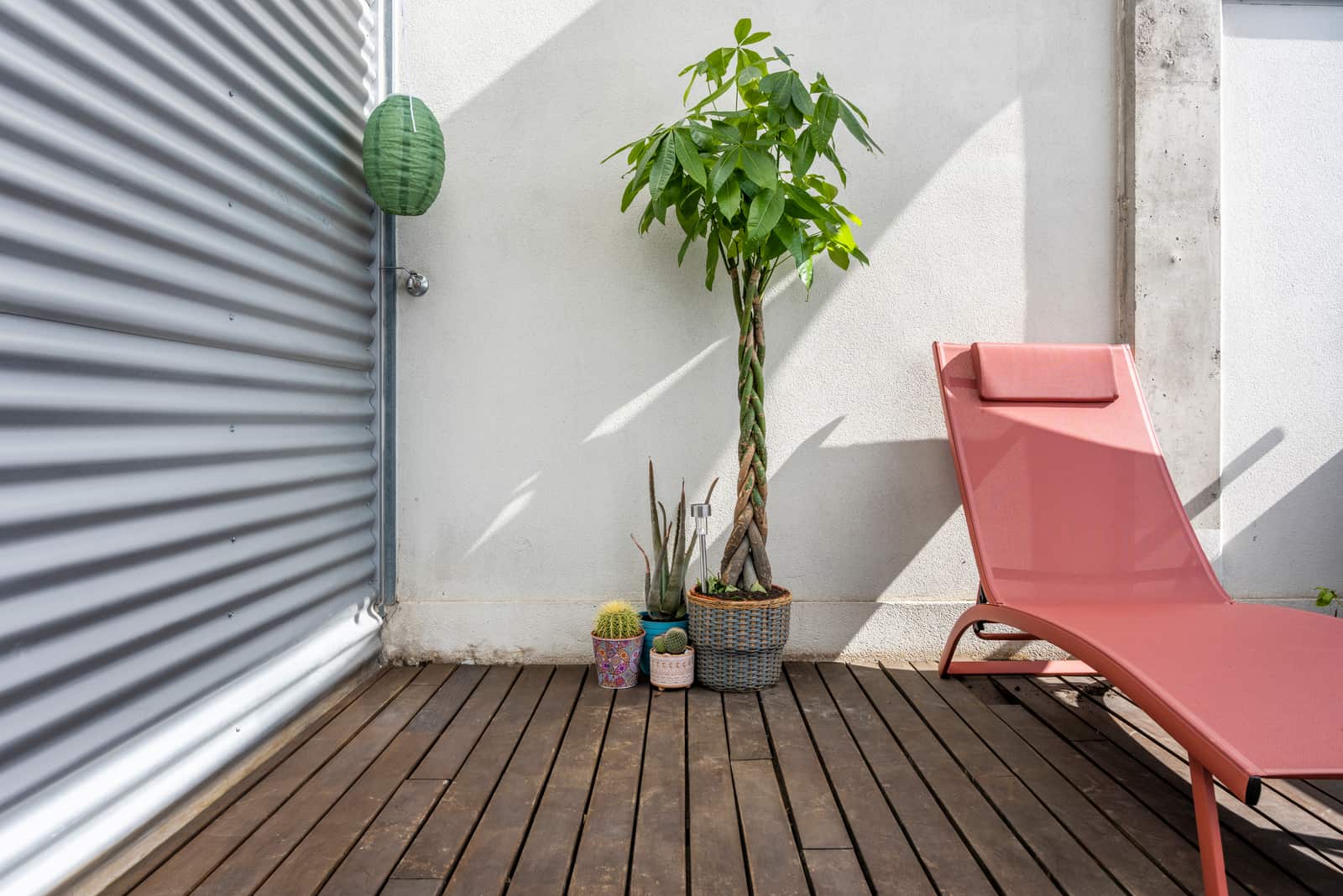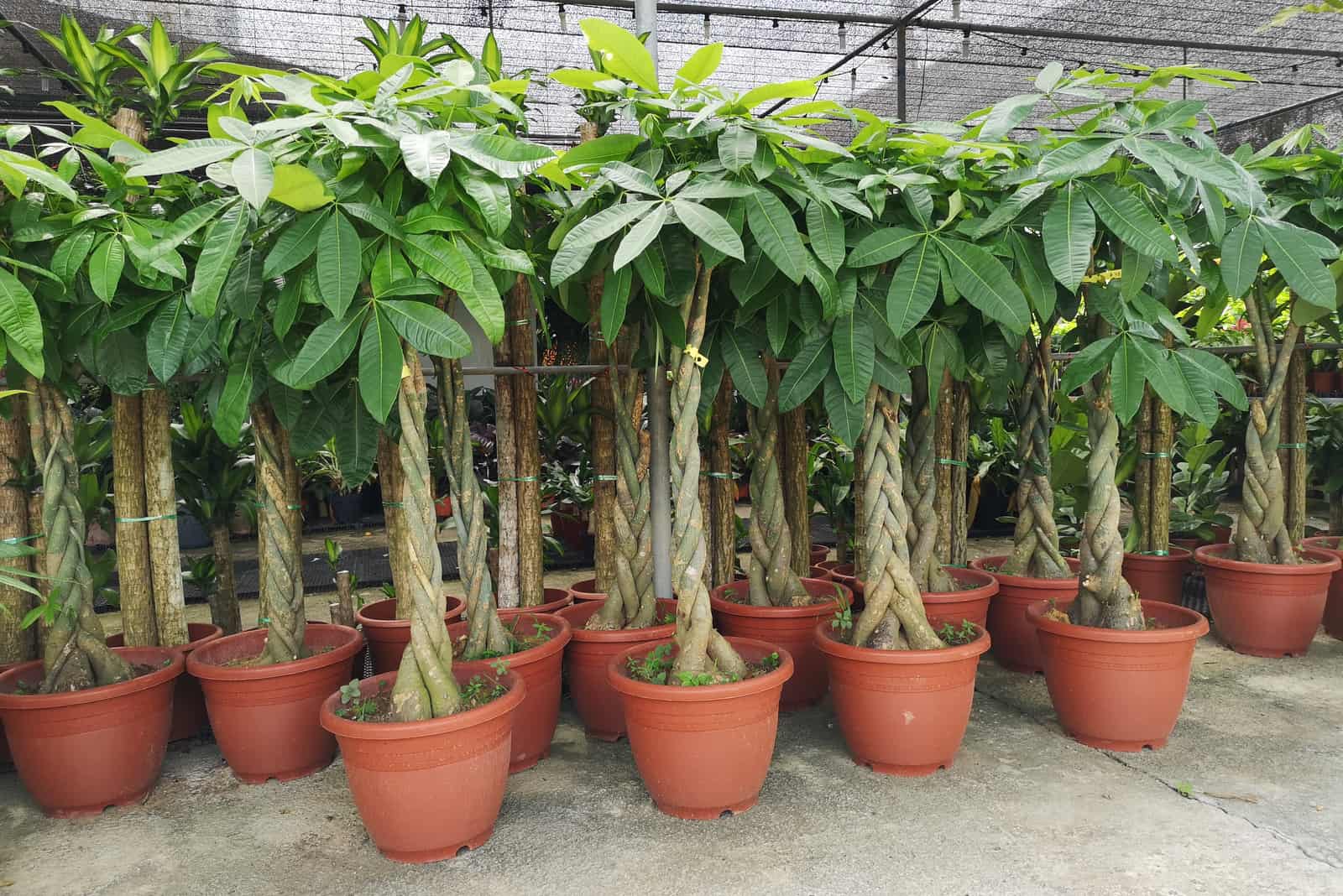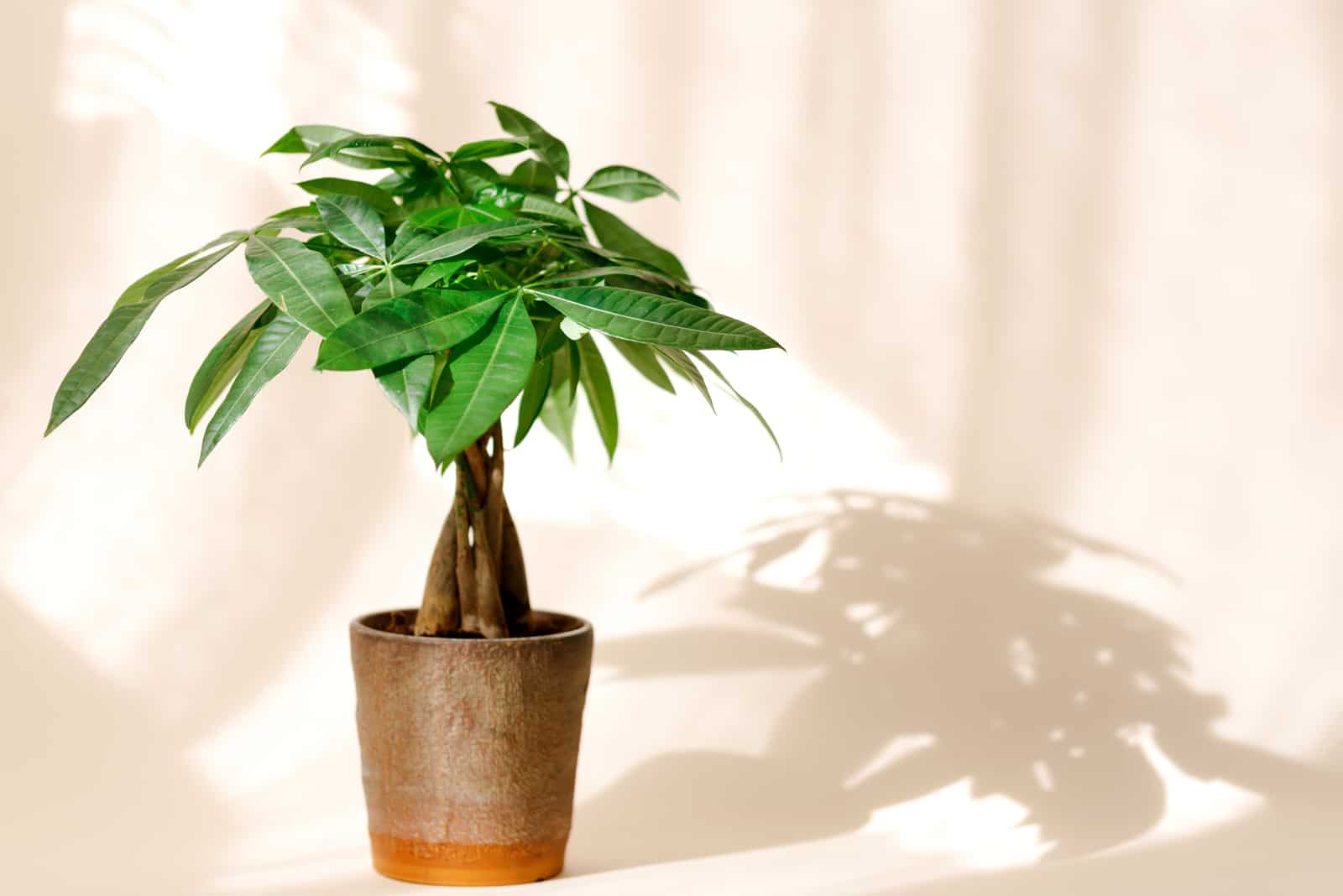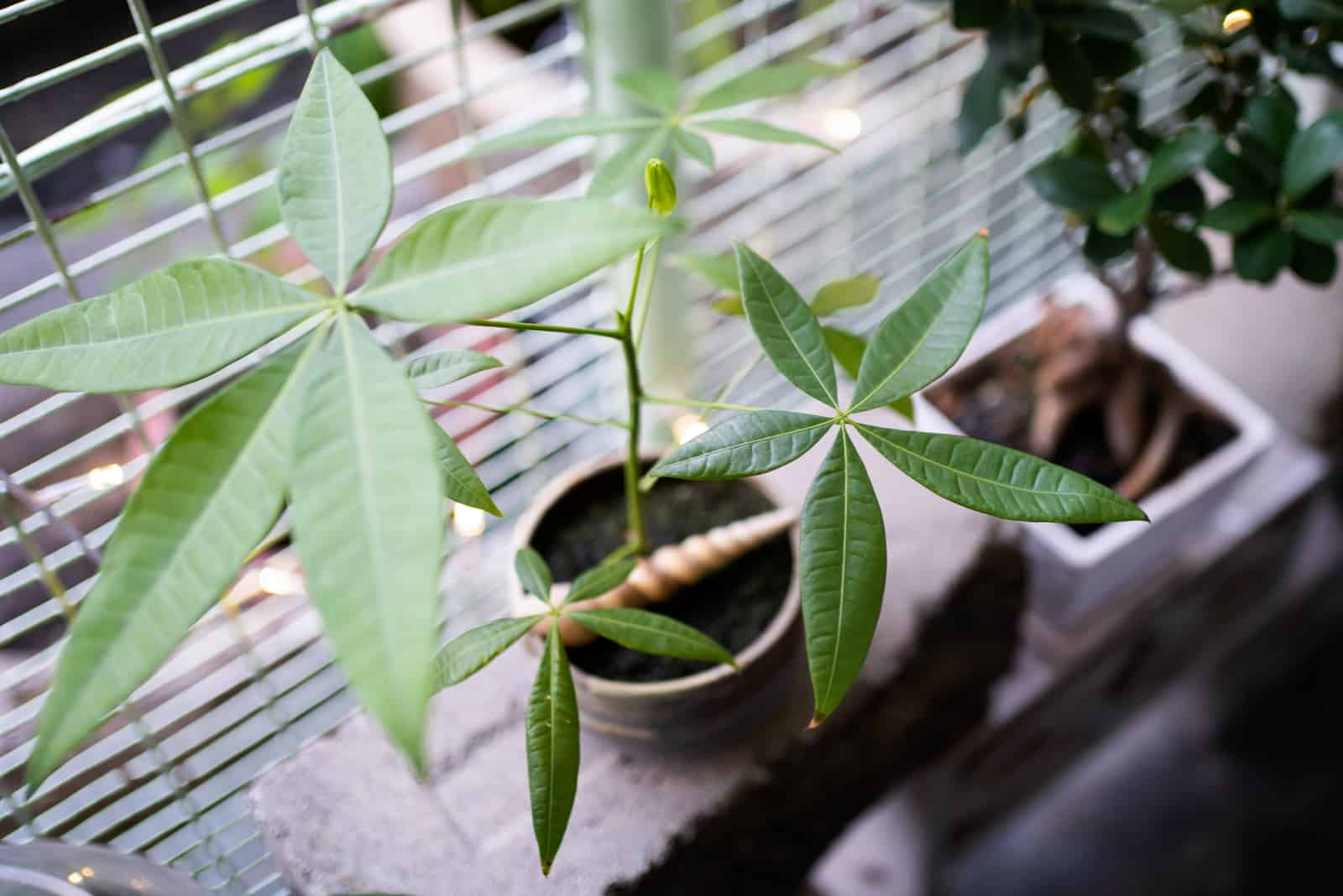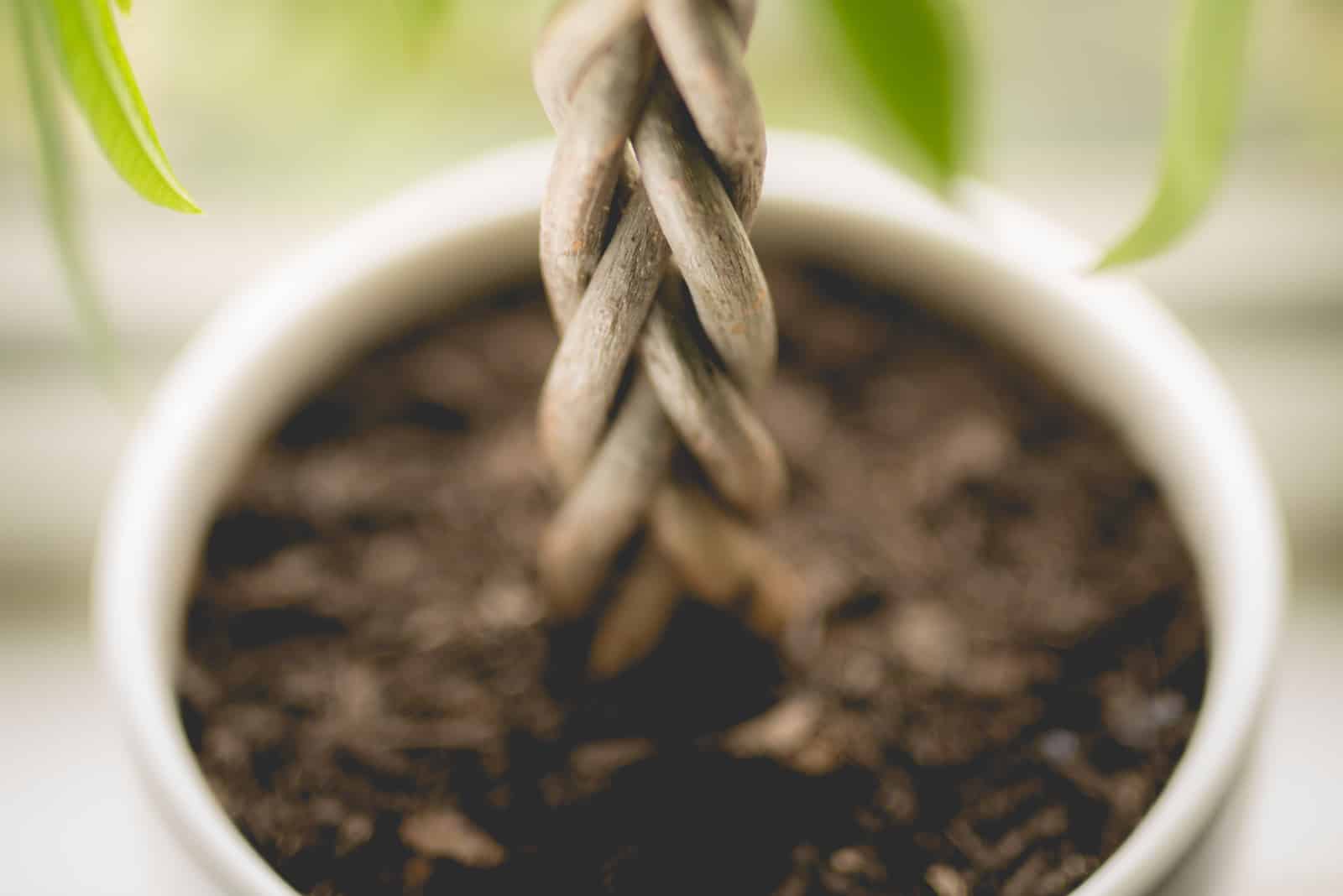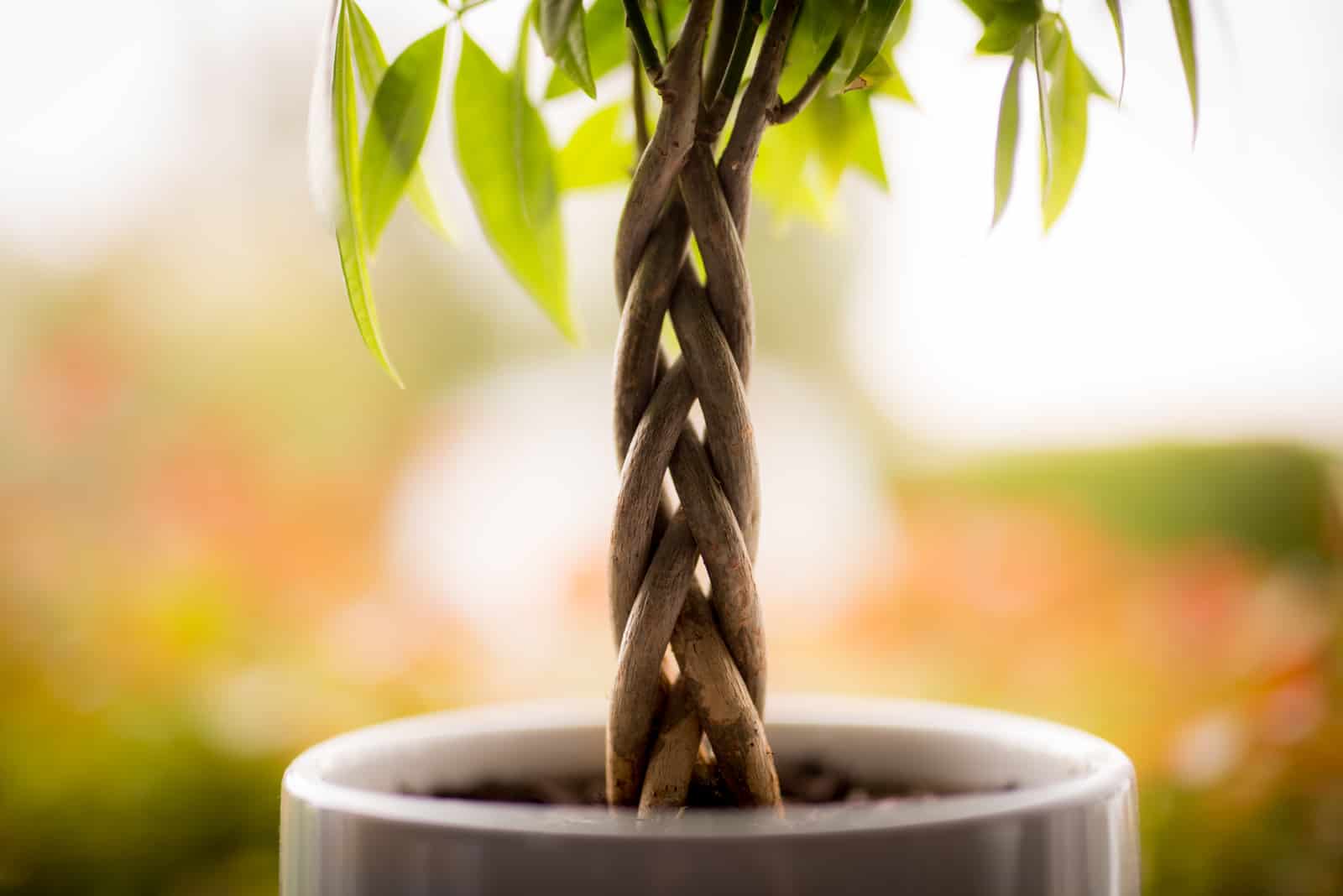The money tree, also known as Pachira Aquatica, is one of the coolest plants out there!
Not only does this plant look absolutely stunning, but it is also known for attracting good luck and good fortune (it’s not called the Money tree for no reason!).
And the coolness doesn’t stop there! Once this plant has grown enough, you can braid it just like hair!
So, if you are interested in decorating your space with something stunning, especially if you have recently started practicing feng shui, then the Money tree is the plant for you. If you have already bought yourself this lucky plant, you can try braiding it.
Keep reading to learn how to braid a Money tree plant!
How To Braid A Money Tree: Step-by-step Guide
A braided Money tree plant will definitely make your home look incredible! This plant already looks beautiful as it is, but you can combine and braid their trunks to make them even more unique.
Luckily, this process is not complicated — it’s actually quite similar to braiding your hair!
The materials you will need:
• String or garden tape
• Measuring tape
• A Money tree plant
• Two garden stakes
Step 1: Examine The Plant
You will have to make sure that your plant is young and healthy, otherwise it will be damaged. You can start by measuring the shoots and carefully examining them. It’s important that the shoots are at least 15 to 16 inches long.
If these shoots are any shorter, you risk reducing your Money tree’s growth.
Even though you should start braiding the plants when they are relatively young, please note that they shouldn’t be too young because shoots might develop permanent scars.
Your plant will also need at least three shoots for braiding!
Step 2: Pick Shoots From The Base Of The Plant
Once you have established that the plant is young, healthy, and has about three to five shoots, it’s time for braiding.
You will start from the base of the plant, where the stems start growing. Next, take two shoots in each hand (or one in each hand if there are only three shoots), leaving one shoot in the center — you see, it’s just like braiding hair!
You can also take two in each hand if you have five shoots available.
If you accidentally break a branch, you can use garden tape to fix the broken ends. The branch will heal in a matter of weeks, and you can then continue with braiding.
Step 3: Make The Initial Plait
Start by bringing the shoots in your left hand over the shoots in your right hand, situating the middle shoot so that it is now on the left, and then carefully and gently start to construct a typical french braid.
Continue this step by doing the same with the shoot in your right hand. Work slowly and remove any Money tree leaves that tangle up as you braid them.
Pro tip: Keep the tree away from direct sunlight during the braiding process because it might get dehydrated. Watering this plant every two to three weeks should be enough.
Step 4: Tie It Up
You should stop braiding and leave a gap of 5 to 6 inches once you reach a leafy part at the top of the plant.
After that, tie the braids together with some string, garden tape, or even a shoelace to keep them in place (whatever looks the prettiest!). Make sure that you don’t wrap the string too tightly or you’ll suffocate the plant — it still needs breathing space to develop correctly!
A tight string can prevent normal oxygen transport throughout the plant, which will cause it to deteriorate.
Step 5: Place The Stakes
Stakes should be planted once you are all done with braiding. You should take two stakes and put them on opposite sides of the plant.
The stakes will provide your braid with some support and prevent it from tilting to one side.
Once you place them, the braided Money tree plant will grow tightly upwards!
For further stability, you can tie the stakes to the tree with the string as well. You can even use the string to decorate the braid.
Step 6: Rebraiding
Young money trees plants grow quickly — and can grow enough to need braiding in just two or three months.
First, you will have to remove the strings or the garden tape that you used to tie your plant and the stakes. The next step should be quite familiar — you have to braid the new parts of the plant and leave five to six inches from the top of the plant unbraided.
You can use strings to tie the braided stems, though you might need to put in longer stakes now because the braided trunk is bigger!
More About The Money Tree Plant
Here are some interesting facts about the Money tree plant for those of you who want to know more!
The Money tree is a plant that goes by many names, including Pachira aquatica, Malabar Chestnut, Saba Nut, and Guiana Chestnut, but no matter what you call this plant, everyone recognizes its beautiful braids and knows exactly what you are talking about!
The Money tree is a tropical plant that originates from South America. Though it comes from tropical regions, it is susceptible to overwatering.
Nonetheless, it is quite easy to take care of one!
It can tolerate various light conditions, and most indoor temperatures will do just fine. These lovely plants don’t usually shed, so you won’t have to worry about constantly cleaning the space around them.
However, what makes this plant truly unique are its amazing braided trunks! They are definitely rare, and make your plant look artistic and exotic at the same time. In addition to its aesthetics, there is a special meaning behind this plant, so let’s find out more!
Meaning Behind Pachira Aquatica
There is a popular legend that has been told for quite some time now, which says that a poor farmer accidentally saw the Money tree plant and became mesmerized by its beauty. Therefore, he decided to start selling it.
Local folks also went crazy about this plant and started buying it in large quantities. This brought a lot of fortune to this farmer, which is why it is often associated with attracting good fortune.
Although the Money tree plant is said to be a type of money plant that attracts fortune and good luck, it has nothing to do with the story about the farmer. The truth is that this plant became popular around the 1980s, mainly due to its aesthetically pleasing braided trunks.
Nonetheless, it is genuinely believed that this plant can attract wealth and positive energy. It has a special place in Chinese culture, mainly because it produces five green leaves, which often symbolize luck and prosperity.
The five leaves are often associated with the five elements: water, space, earth, wind, and fire.
In order to prevent prosperity and success from leaving the house, the braids are also claimed to “lock in” these features. Due to their symbolic significance, it is also typical to see them braided with five stems.
This is why the mature Money tree plant is such a great present for a friend who has just bought a new home!
You can find them easily on Amazon and in local garden shops. They are not expensive, and you can even look at them as a sort of investment because they attract more money!
Money Tree Plant Care Guide
You might think that these plants require special care, but they actually have similar requirements to any other houseplant. As we already mentioned, they are more susceptible to overwatering compared to other indoor plants.
Overwatering is usually accompanied by Money tree root rot, which is a fungal disease that can completely ruin your plant. However, if you find the perfect watering schedule you won’t have to worry about this.
Let’s find out more!
Soil Requirements
It is important that you provide these plants with good drainage, and the best way to do so is by providing them with a well-draining potting mix. Keep in mind that they also enjoy porous soil that allows airflow and is rich in nutrients.
You can either use a store-bought succulent potting mix or make one on your own. It is important that you add perlite, peat moss, or sand and gravel to your potting soil.
Water Requirements
This is where you have to be extra careful.
I honestly can’t tell you when to water your money tree because every plant has different watering needs. Light, temperature, and humidity also affect the water requirements of any plant.
I usually water my Money tree bonsai every one to two weeks, though your plant might need more water if you keep it in direct sunlight or if the humidity is low.
The best practice is to check the soil before watering. If the top one or two inches of the soil has dried, you should water the plant. If the soil still feels kind of moist, I would suggest you postpone watering for a few days.
It’s also important that you put the plant in a pot with drainage holes in the bottom, which will help remove excess water and prevent overwatering.
Humidity Requirements
This plant originates from the tropical wetlands of Central and South America, so they are used to growing in humid environments.
They will thrive in humidity levels above 50%. If you live in a dry climate, there are some ways you can boost humidity levels.
For instance, you can invest in a humidifier, create a pebble tray, or try misting your plant on a daily basis. Please note that you should mist the plant in the morning so the water can evaporate throughout the day.
If the leaves are wet all day it might attract fungi, and the green leaves could start turning yellow. Trust me, yellow does not suit the Pachira aquatica.
Light Requirements
These plants thrive in indirect sunlight. Though some growers keep this plant in direct sunlight, it can burn the leaves and affect the overall health of the plant.
Keeping them in low light is no good either, which can prevent new growth and cause wilting. If you have a space with low light conditions that you want to decorate, you can consider buying a Snake plant or maybe some indoor hanging plants that can grow in low light.
I would recommend you find an area that gets a moderate amount of indirect light for this indoor tree.
Temperature Requirements
Money tree plants prefer temperatures between 60 to 80 degrees Fahrenheit. These plants aren’t frost-hardy, and they are also sensitive to sudden temperature changes.
You should keep your Money tree plant away from cold drafts and heat sources like radiators or space heaters.
Fertilization Requirements
These plants should be fertilized at least once a month during the growing season. You can use an all-purpose fertilizer with an NPK ratio of 10-10-10.
Don’t use any strong fertilizers that could possibly harm your plant, and always follow the instructions displayed on the packaging.
Repotting
Money trees are fast growers, so you might need to repot them sooner than you think. It’s important that you avoid repotting just before you are about to braid the plant as it may cause transplant stress.
When repotting, you should use a pot that is slightly larger than the previous one. The ideal pots for Money trees are made of porous materials, such as terracotta or unglazed clay.
If you are repotting a plant suffering from root rot, you should use pruning shears to trim off any dead or decaying roots. You should also use fresh soil so you can be sure it isn’t contaminated fungi.
If repotting can’t save your plant, you should try propagating it.
Propagation
Root rot is a common problem for many plants, not only this lucky bonsai. I always advise propagating plants just in case repotting can’t save them.
If the repotting is successful, you will have two healthy plants to either decorate or give as gifts.
There are two propagation methods; either putting a stem cutting in soil or water, it’s totally up to you!
Propagation By Stem Cuttings
• Remove the soil from the plant’s roots after taking it out of the pot.
• Cut off four to six stems from the plant’s roots using a sterilized knife or a pair of pruners (make sure they are healthy). Two to four nodes must be attached to the chosen stems.
• To promote better growth, you can dip the end of the cut stem into a rooting hormone.
• The cutting should be placed into sterile potting soil. To ensure better drainage, combine the soil with sand or perlite and pick a pot with drainage holes. The cutting needs to be buried in the ground about half an inch deep.
• Water the potting mix then continue with your regular watering schedule.
• If given the required conditions, new growth should be noticeable in three weeks.
Propagation In Water
Follow these steps to propagate this plant in water:
• Remove the money tree plant from its container and shake off any remaining soil to reveal the root ball.
• Cut the roots apart.
• A sterilized, sharp blade or knife should be used to cut secondary and tertiary roots.
• Fill half a glass jar with water.
• Fill the jar with the roots.
• Put the jar in a place with dim indirect light.
• Change the water once a week to prevent contamination.
• Transfer the young Money tree plant to a tiny container with drainage holes after propagation.
To Sum Up
Congratulations, now you know how to braid a Money tree plant!
It is quite easy, and just like braiding hair. It is also easy to take care of this plant — you just have to be careful with the watering because this indoor tree is easily overwatered. Even though they don’t enjoy having soggy soil, leaving them to completely dry is not a great option either.
Therefore, you should always check the soil before watering!
Follow the other plant care instructions, and you will have a happy and healthy Money tree plant. If you are considering buying this plant, you should definitely try your luck — who knows, maybe it will make you rich.
I hope this article was helpful.
Until next time!
Like this post? Share or pin it for later!

